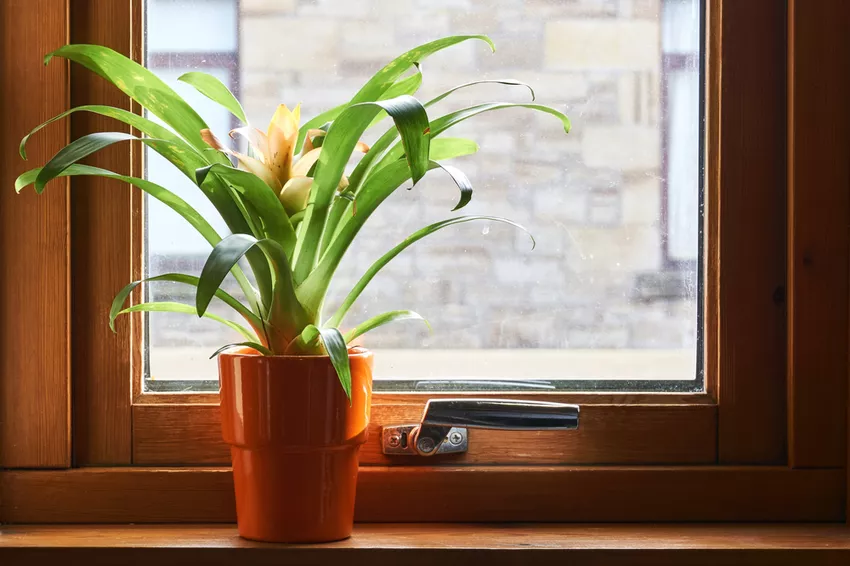If a houseplant combines exotic charisma with uncomplicated care properties, then this is the bromeliad. The best-known representative of this species is the pineapple. Bromeliads mostly consist of a rosette of leaves, in the center of which yellow, red or orange bracts develop. Smaller plants are often available in stores glued to a branch or stone, which the epiphytes can easily cope with.
 The bromeliad needs a lot of light
The bromeliad needs a lot of light
Water and fertilize bromeliads properly
Similar to orchids, bromeliads grow wild on trees and rarely root in the ground. The exotics mainly take up the water with the leaf funnel. Therefore, pour the plants into this funnel with low-lime water. (5.00€) A little liquid should remain in it, but only enough so that the bromeliad does not start to rot.
Important: The substrate must not dry out completely and should be wetted. During the growth period you can add special bromeliad fertilizer to the irrigation water once a week in the dosage printed on the packaging. This mixture is only put on the ground, but not in the hopper.
Bromeliads love high humidity. Therefore, spray the plants once a day with low-lime water.
Which substrate is suitable?
Plant bromeliads that grow epiphytically in nature in orchid soil. Species that grow on the ground feel most comfortable in special bromeliad soil.
It is always repotted when the exotic beauty has become too big for its container or has become detached from the substrate. Bromeliads that have been cultivated without soil up to now should be wrapped with a wire at the base so that they can be held in the soil. If small roots have formed and the plant stays upright by itself, you can remove it again.
diseases and pests
- If the tips of the leaves are brown, the air is too dry. Spray the bromeliads daily with low-lime water. You can cut off the unsightly edges of the leaves.
- If there is no flowering, the exotic is too dark. Make the plant lighter and put a small piece of apple in the funnel. The ripening gas released by the apple effectively stimulates flowering.
- If young bromeliads suddenly die, fungal infestation is usually the cause. Unfortunately, most of these specimens cannot be saved.
Bromeliads are quite commonly infested by aphids, mealybugs, scale insects and root lice. Occasionally, spider mites or fungus gnats join them. Since the exotic plants are very sensitive to chemical agents, you should first try to combat them with home remedies. Daily sprays with a mixture of one liter of water, a tablespoon of soft soap (€44.90) and a few dashes of washing-up liquid have proven effective.
tips
With good care, children will form on the plant over time. If these are about half the size of the mother plant, you can cut off the offshoots and put them in their own pot. After about two years, the small bromeliads will produce their first flowers.